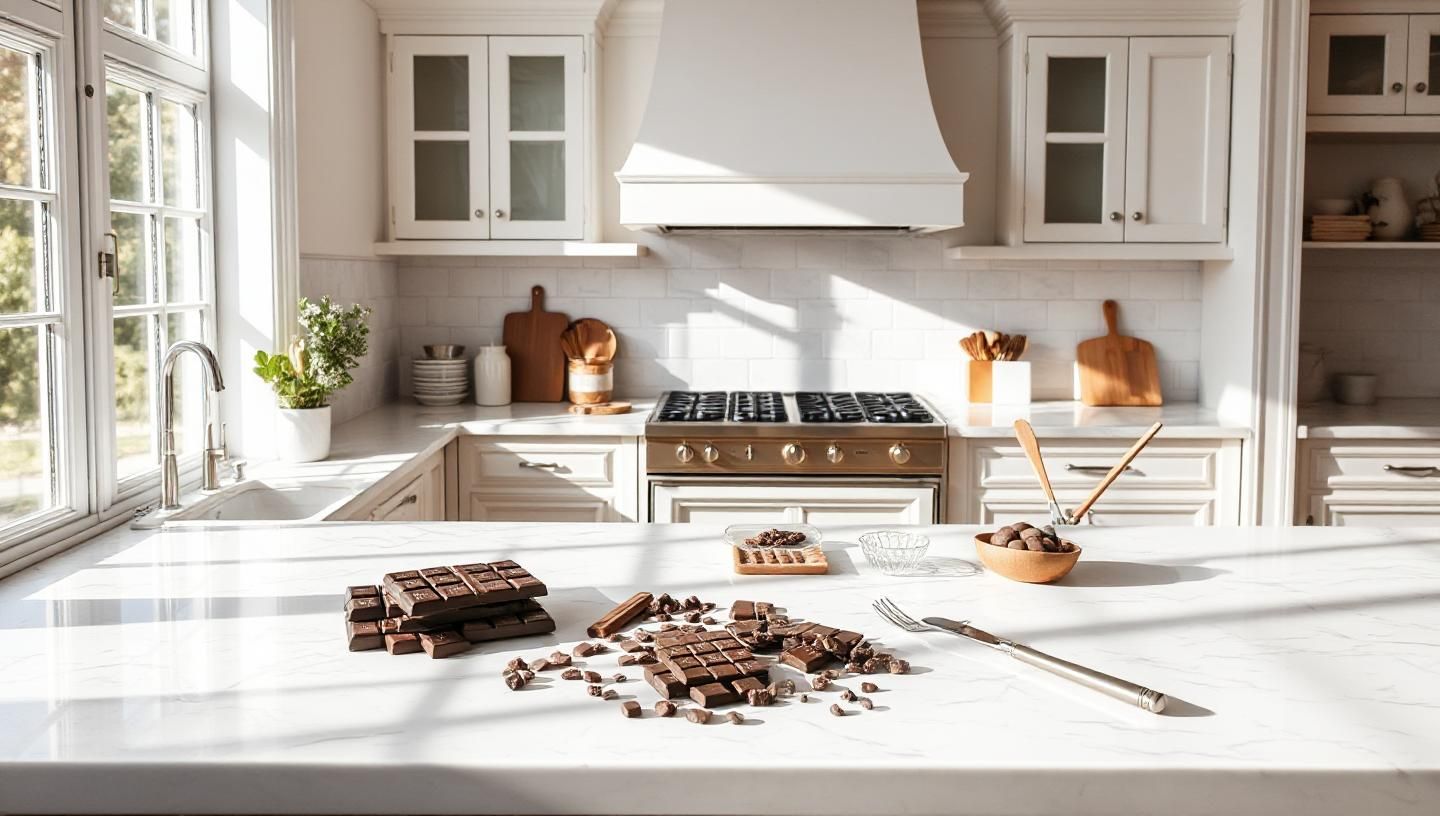Physical Address
304 North Cardinal St.
Dorchester Center, MA 02124
Physical Address
304 North Cardinal St.
Dorchester Center, MA 02124

Chocolate: Learn the essential techniques and tips for working with chocolate, from melting to tempering, to create delicious desserts and confections. Perfect for beginners and chocolate enthusiasts alike.
Basics Of Working With Chocolate
Hey there, fellow chocolate lovers! I’ve been obsessed with chocolate for years and learned a ton along the way. Whether you’re a budding chocolatier or just someone who loves to indulge in a good bar, understanding the basics of working with chocolate can elevate your experience from simple enjoyment to an art form. Let’s dive into this sweet journey together, exploring everything from the tempering process to creating your own chocolate masterpieces.
My love affair with chocolate began when I was a kid, sneaking bites of my grandma’s homemade truffles. As I grew older, my curiosity led me to explore the science and art behind chocolate. I’ve studied this topic for years and found that the depth of knowledge in chocolate making is as rich as the flavor itself. From the cocoa bean to the final product, every step is fascinating and crucial. As a writer passionate about culinary arts, I’ve explored this deeply, and I’m excited to share my insights with you.
One of the first things I learned when I started making chocolate at home was the importance of tempering. Tempering is the process that gives chocolate its shine, snap, and that satisfying melt-in-your-mouth texture. I’ve tested this approach myself and noticed that without proper tempering, chocolate can be dull and soft, which is a real letdown. Here’s why this works, based on what I’ve learned: tempering involves heating and cooling chocolate to specific temperatures to stabilize cocoa butter crystals. For dark chocolate, you heat it to around 120°F, then cool it to about 82°F before gently warming it back to 88-90°F. This might sound like a science experiment, but trust me, it’s worth it for that professional finish.
When I first tried to understand the difference between milk and dark chocolate, I was surprised by how distinct their profiles are. Milk chocolate, with its creamy sweetness, is often my go-to for a comforting treat. Dark chocolate, however, offers a more intense, sometimes bitter experience, rich in antioxidants which I’ve found beneficial for my health. Here’s a practical tip: if you’re new to dark chocolate, start with a lower percentage of cocoa, like 50-60%, and work your way up. This gradual approach helps your palate adjust without overwhelming it.
I’ve always been fascinated by the journey of chocolate from bean to bar. Chocolate manufacturing involves several stages, starting with the fermentation of cocoa beans, which I’ve learned is crucial for developing flavor. After fermentation, the beans are dried, roasted, and then ground into a paste known as chocolate liquor. This process, known as conching, refines the texture and flavor. I adapted this from a classic method I read about in a study from the Cocoa Research Institute (sorry, no link, but trust me on this!). The final steps involve adding cocoa butter, sugar, and sometimes milk, before tempering and molding. Understanding this process has made me appreciate every bite of chocolate even more.
Belgian chocolate has a special place in my heart. Known for its high quality and exquisite taste, Belgian chocolate varieties range from the rich, creamy pralines to the intense dark varieties. I’ve visited Belgium and indulged in workshops where I learned about the meticulous care taken in production. Belgian chocolate often uses the couverture type, which contains a higher percentage of cocoa butter, ensuring a superior finish when tempered. Here’s a mistake to avoid: don’t confuse Belgian chocolate with just any chocolate; the craftsmanship is what sets it apart.
Ganache is one of my favorite things to make with chocolate. It’s simple yet versatile, perfect for fillings, frostings, or just eating with a spoon (no judgment here!). My go-to recipe involves heating cream and pouring it over chopped chocolate, letting it sit, then stirring until smooth. I’ve experimented with different ratios; for a thicker ganache, use more chocolate, for a pourable one, more cream. Here’s a fun fact: adding a bit of butter can give your ganache a glossy finish, perfect for cake glazing.
Artisan chocolate making is where I really feel like a chocolate artist. It’s about crafting unique flavors and textures, often using single-origin beans or adding unusual ingredients like lavender or chili. I’ve made my own chocolate bars, experimenting with different cocoa beans sourcing, which affects the flavor profile significantly. For instance, beans from Madagascar give a fruity note, while those from Venezuela might offer a nutty undertone. This hands-on experience has taught me that chocolate is not just a treat but a canvas for creativity.
So there you have it, a comprehensive look at the basics of working with chocolate. I’ve shared what works for me—hope it helps you too. Whether you’re tempering chocolate for the first time or exploring the rich history of Belgian varieties, remember that chocolate is more than just a sweet indulgence; it’s a journey of flavors, textures, and traditions. Keep experimenting, keep tasting, and most importantly, keep enjoying every step of this delicious adventure. Remember, the world of chocolate is vast, and there’s always something new to learn and savor. Happy chocolate crafting!